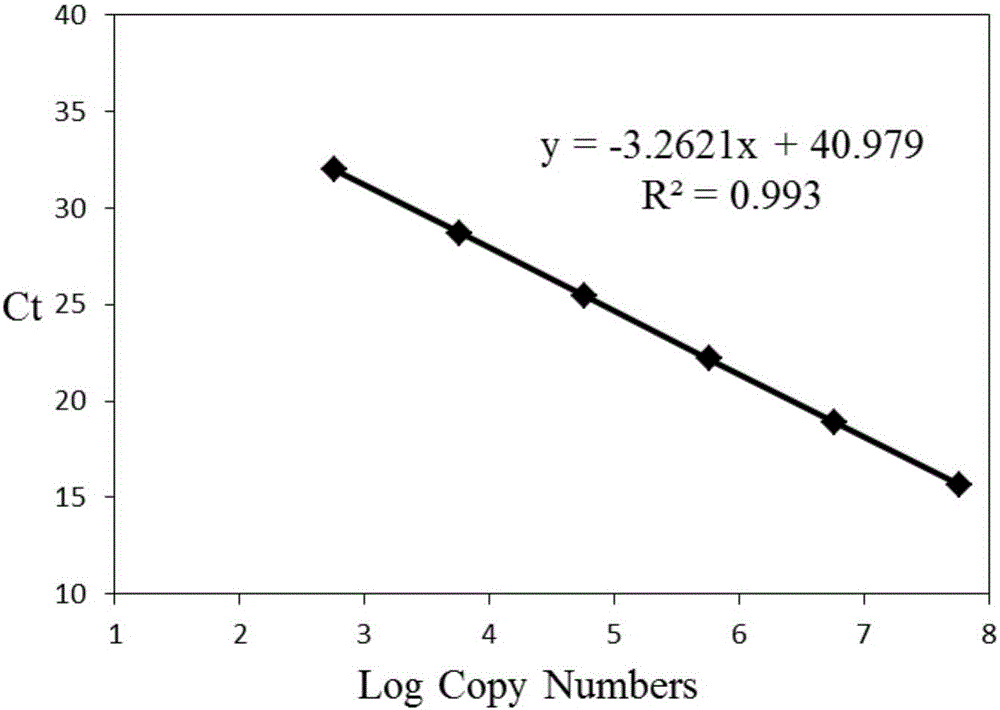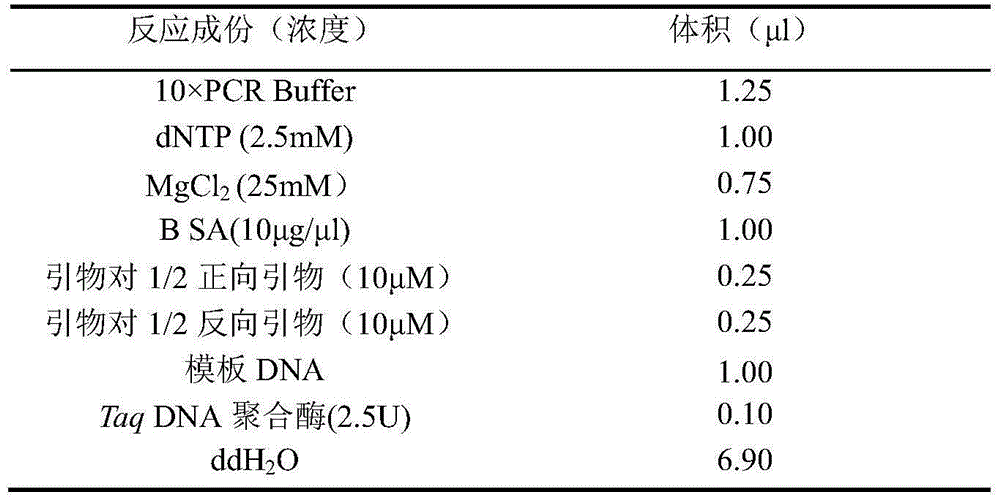Quantification method for denitrifying microorganisms in aquaculture environment sediments
A technology for denitrifying microorganisms and aquaculture, which is applied to the measurement/inspection of microorganisms, biochemical equipment and methods, etc. It can solve the problem of losing another type of microorganisms, and achieve short time, comprehensive and accurate quantitative information, and good results Effect
- Summary
- Abstract
- Description
- Claims
- Application Information
AI Technical Summary
Problems solved by technology
Method used
Image
Examples
Embodiment Construction
[0032] 1. Extraction of metagenomic DNA
[0033] Weigh 0.3 g of aquaculture water environment sediment sample, add it into a lysis reaction tube, and add 1100 μl of lysis buffer into the tube. Put the lysis reaction tube into the nucleic acid extractor, set the speed to 4.5, and the time to 30s for lysis. The centrifuge tube was centrifuged at 13000 rpm for 15 min at 4°C. The supernatant was transferred into a new 2ml centrifuge tube with a pipette tip cut off, and 250μl of protein precipitation buffer was added, mixed by gentle inversion 10 times, and centrifuged at 13000rpm at 4°C for 5min. Transfer the supernatant into two new centrifuge tubes with a tipped pipette, shake the suspension evenly to suspend it, and add 500 μl of the suspension to each centrifuge tube. Gently invert and mix for 2 minutes, and place the centrifuge tube in a rack at 4°C for 3 minutes. Aspirate 300 μl of supernatant from each tube and discard, and gently mix the supernatant and suspension. The...
PUM
 Login to View More
Login to View More Abstract
Description
Claims
Application Information
 Login to View More
Login to View More - R&D
- Intellectual Property
- Life Sciences
- Materials
- Tech Scout
- Unparalleled Data Quality
- Higher Quality Content
- 60% Fewer Hallucinations
Browse by: Latest US Patents, China's latest patents, Technical Efficacy Thesaurus, Application Domain, Technology Topic, Popular Technical Reports.
© 2025 PatSnap. All rights reserved.Legal|Privacy policy|Modern Slavery Act Transparency Statement|Sitemap|About US| Contact US: help@patsnap.com



